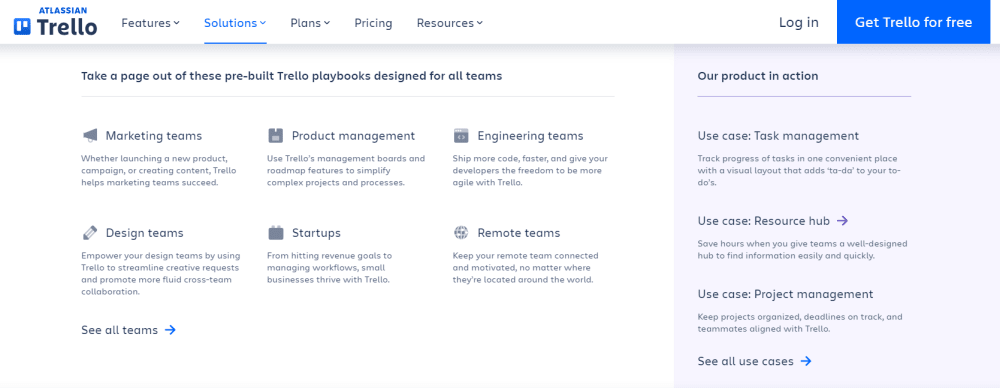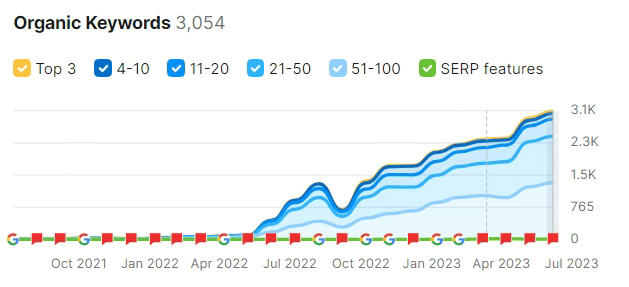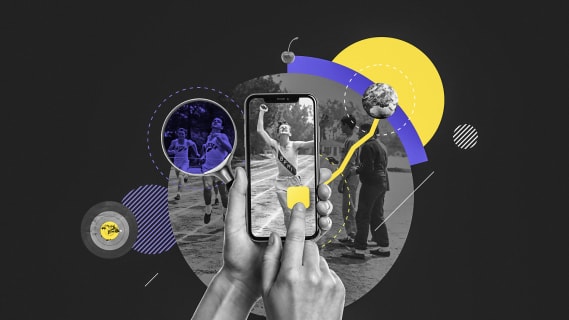How to do SEO for mobile apps?
Mobile apps are an essential part of most businesses nowadays. The sources vary in the exact numbers, yet the average amount of time spent daily on using mobile apps in the years 2012-2013 by US citizens was about 2 hours (via Business Insider). Statista provides more recent insight, with 46% of US citizens spending 5–6 hours daily on their phones. Thus, reaching out to customers by creating mobile apps isn’t an advantage, it is a must. But simply developing an app will not be enough – you still need to promote it. In this article, we will focus on that, and explain how to do SEO for mobile apps. We invite you to read on.

Table of contents
How to do SEO for mobile apps?
You can do SEO for mobile apps in two ways – let’s say “traditional”, which we have mentioned in our article on web design and SEO, and through App Store Optimization. In this section, we will focus on the former. But even here, it is not that simple. Why?
You can optimize both the app itself and its webpage. However, the first option is only viable if you have a web version of your application. Otherwise, it will be much more difficult to achieve a high position in Google, thus it is better to focus on creating a website dedicated to it. It does not mean that if you have a web version of your app, you don’t need a website, but simply that you do not have to put extensive efforts into optimizing the in-app content.
Example: Trello - they have a mobile app, desktop app, and website: https://trello.com/
When preparing a website for your application, you should remember to do both on-site and off-site optimization. Even the best page will not appear high in SERPs (Search Engine Result Pages) without a proper link-building strategy. So, knowing that, let’s delve into some of the best SEO strategies for optimizing your mobile app.
Create sub-pages for each feature of your app
The first strategy that you need to adopt is creating sub-pages, in-app or on your website. You should make one for each feature of your app, and each should consist of a description of the particular feature, with keywords in mind. It is crucial since it will attract people who desire to meet their specific needs by using your application. How does it work in practice? Let’s look at an example.
Imagine you are creating a sports app. Its main function is to monitor users’ training progress, but it also has features such as a workout planner and calorie calculator. In this case, your main page should consist of the keywords related to the main themes: sports and diet, while you can prepare even more specific sub-pages, optimized for the most popular sports: running, cycling, walking, swimming, and also calorie counting or workout planning.
Or using the earlier Trello example:

They have feature subpages that can be optimized for keywords related to each feature.
Prepare landing pages for target groups
Apart from promoting the features, the SEO strategy for your mobile app should also focus on attracting certain target groups. You can do this by creating landing pages dedicated to each type of your marketing personas. All you have to do is consider who your potential users are and test this in practice. Let’s return to our previous example to see how it could work.
As a sports app owner, you will be mainly targeting people who want to lead active lives. The landing pages could be optimized with such keywords:
- App for cyclist
- App for runners
- App for swimmers
- App for people who want to lose weight
- App for personal trainers
Or again - using the earlier Trello example:

They have subpages dedicated to different groups that can use their applications. Thus, they can optimize each sub-page for phrases like “Task management tool for startups”, “task management tool for marketing team”, “task management tool for product management”, or even something more general like “app for startups”, “app for marketing team”, etc.
Write a blog
The more content is on your website, the better the SEO strategies for your mobile app will work. Writing a blog is an excellent way to increase your topical authority and attract your target audience through various guides, rankings, and discussions. It will work great both for B2C and B2B targeted apps, although the way you introduce this tactic depends strongly on how you plan to monetize your application.
Getting back to our sports app – imagine you are creating a blog on its website. What topics should you tackle and how to promote your app through both B2B and B2C users? Here is an example:
| Area | B2C | B2B |
|---|---|---|
| Topic | Top 10 delicious meals to indulge in on a diet. | How to engage people to work out regularly. |
| Target | People who want to lose weight. | Gyms, personal trainers. |
| Marketing strategy | Include a paragraph on how the users can count calories in your application. | Mention your training progress tracking app as an excellent way to keep people motivated. |
| Effects | New users for your app and gaining more recognition as a reliable source of dietary knowledge. | Gyms recommend your application as a way to maintain customer retention, and personal trainers use it to increase their clients’ results. |
| Monetization type | In-app adverts, pay-to-use. | In-app adverts, premium subscriptions, pay-to-use. |
Want to see some results? This is an organic visibility chart from the SemRush tool, for the website of one of the clients of our partner SEO company. Their on-site SEO activities are based mainly on the development of the blog content:

This graph shows changes in the number of organic keywords this domain has positions for.
How to do App Store Optimization?
When preparing an SEO strategy for your mobile app, you mustn’t focus only on the typical search engines, such as Google, but also on the ones in Google Play and Apple App Store. Many of your potential users might be looking for your application, or a similar one, directly there, rather than reading through various opinions and websites on the internet. Therefore, this strategy is crucial.
What is App Store Optimization?
App Store Optimization (ASO) is quite similar to SEO but targeted at mobile app stores. Its aim is to improve the ranking and visibility of your application in Google Play, Apple App Store, Amazon Appstore, or other similar engines. Your app’s rating, and thus its position, is based on several factors:
- Name
- Keywords
- Description
- Downloads
- Reviews and ratings
- Updates
What are the app store optimization best practices?
If you want your app to reach a high position in app store search results, you need to diversify your actions for each platform. While seemingly similar, Google Play and Apple App Store are quite different, even if something works in one of them, it might not be effective in another. What are the key differences?
- Apple App Store has keywords and subtitle fields
- Google offers a short description field
The scoring is also based on different elements in both platforms, as presented in the table below
| Apple App Store | Google Play |
|---|---|
| App name | App title |
| App subtitle | App short description |
| App URL | App long description |
| Keywords | Reviews and ratings |
| Installs and engagement | Installs and engagement |
| App updates | App updates |
| In-app purchase titles and descriptions | In-app purchase titles and descriptions |
via: https://www.semrush.com/blog/app-store-optimization/
Another app store optimization practice is submitting your application and its updates before their announced date. Doing so as a part of your app’s pre-launch marketing campaign will allow you to avoid any delays since every application in these stores has to undergo an approval process.
Finally, your app should include elements that will encourage users to leave reviews. This will increase your chances of reaching the 1st place in the search results and give you some feedback on the application itself.
The takeaway
SEO for mobile apps is the process of making your application more visible and attracting users. It can be done in-app, if your application is web-based, by creating a website dedicated to it, and in app stores. The best way to do it is by creating sub-pages for your app’s features, landing pages dedicated to target groups, and a blog on related topics with some marketing materials inserted into the posts. You should not forget about App Store Optimization as well – it is the key to making your application visible. Each of the stores has different rating criteria, thus you should adjust your strategy accordingly.
Share this article:






